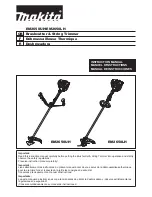
The following table illustrates how the quality and quantity of permeate produced in
by RO system is affected by changes in temperature, salinity and pressure:
With constant....
And increasing....
Permeate
TDS
Capacity
Salinity and Pressure
Temperature and Pressure
Temperature and Salinity
Temperature
Salinity
Pressure
Increases
Increases
Decreases
Increases
Decreases
Increases
Table 3.0 - Factors Affecting Permeate Quality
NOTE
If feedwater salt concentration decreases, the product water flow rate
should not be allowed to increase more than 20% above rated flow.
Reject pressure will need to be lowered to maintain rated flow.
CAUTION
Operating the unit at more than 120% of rated capacity in low
salinity water can damage the membranes and will void the RO unit
warranty.
3.3.2
TEMPERATURE CORRECTION FACTOR
As previously described, the output capacity of any RO unit is highly dependent on
feedwater temperature. To quantify this relationship, theoretical data has been
utilized to develop Temperature Correction Factors (TCF) to compensate measured
flowrate to calculated flowrate at 25°C/77°F. This allows the operator to establish the
baseline flow for a given temperature, allowing more accurate troubleshooting. The
procedure for calculating the temperature compensated flow is as follows:
1)
Measure raw water temperature and determine the corresponding
correction factor from Table 3.2 based on the measured temperature.
2)
Note the actual product flow rate at the
Product Flow
meter. Multiply the
actual product flow meter flow rate by the correction factor from Table 3.2 to
give theoretical temperature compensated flow under standard conditions
(25°C).
Содержание Sea Recovery ULTROClear Series
Страница 2: ...Intentionally left blank ...
Страница 18: ...Figure 3 4 Major Components Location ...
Страница 31: ...8 0 SYSTEM DRAWINGS AND DIAGRAMS AND PARTS LIST ...














































